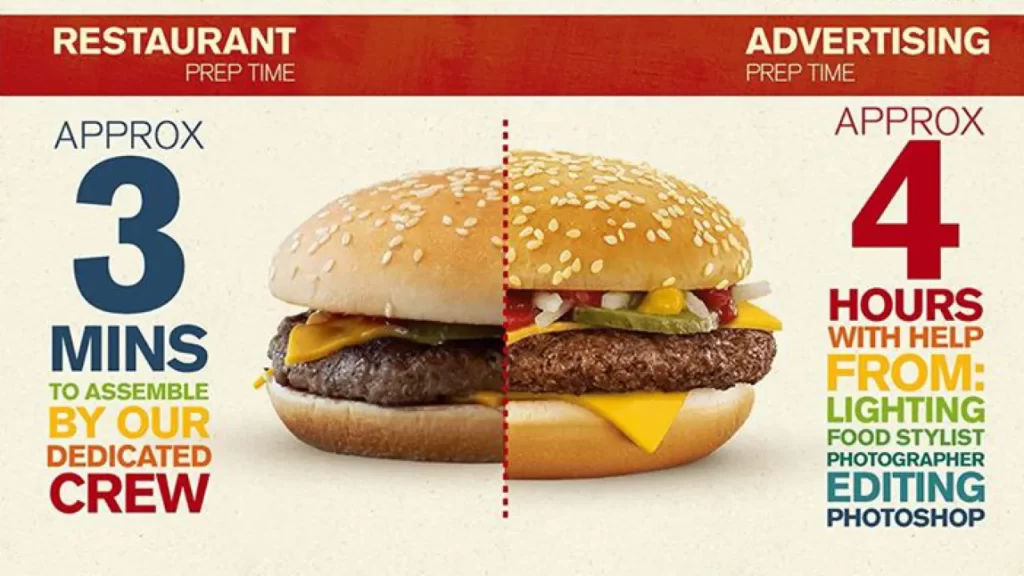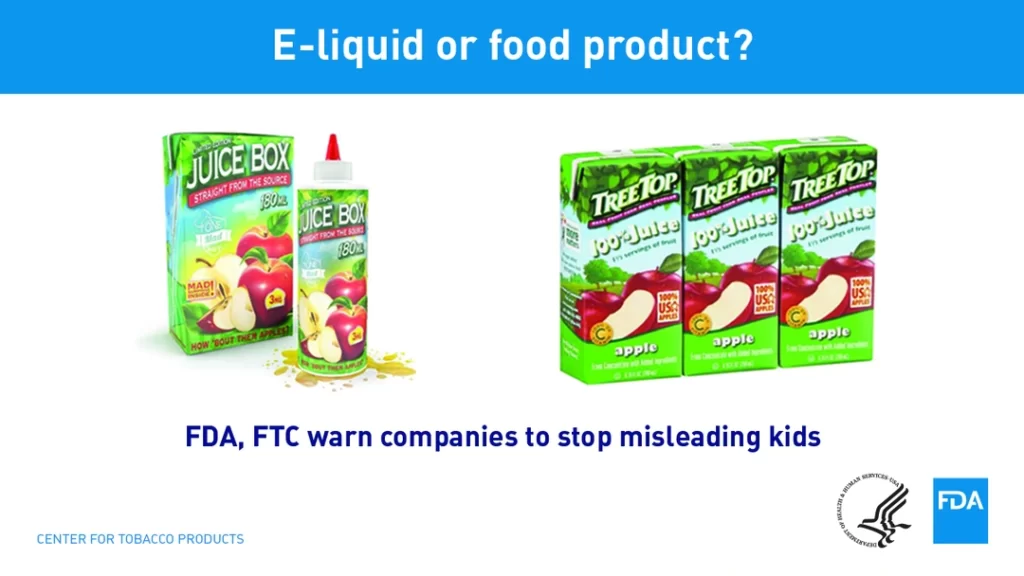Unveiling the Truth Behind Deceptive Advertising
Have you ever encountered an advertisement that seemed too good to be true? You know, the ones that promise miraculous results or claim to offer life-changing solutions with just a simple purchase? Well, you're not alone. In today's world, deceptive advertising has become widespread, leaving consumers frustrated, cheated, and even deceived.
In this blog post, we will dive deep into the murky waters of deceptive advertising, uncovering the truth behind those glossy claims and revealing the tactics used to lure unsuspecting consumers. But don't worry; we won't leave you hanging in despair! We'll also equip you with the knowledge and tools to spot these deceitful practices and make informed decisions as a savvy consumer.
Before we get started, let's take a quick look at some eye-opening statistics that shed light on the extent of deceptive advertising in our society. According to a recent Consumer Reports study, 67% of consumers have felt deceived by an advertisement at least once. That's a significant number of people who have fallen victim to misleading claims and false promises.
Moreover, the Federal Trade Commission (FTC) reported a substantial increase in complaints related to deceptive advertising over the past year. Deceptive advertising cases accounted for more than 35% of all consumer complaints received by the FTC. These numbers indicate that misleading advertising is not just a rare occurrence but a prevalent issue that demands our attention.
So, buckle up and get ready to embark on a journey where we'll unravel the hidden truths of deceptive advertising. Together, we'll expose the tricks advertisers employ, discuss the legal and ethical implications, and empower you with the knowledge to become a vigilant consumer. Let's unveil the truth and take a stand against deceptive advertising!
Stay tuned for our next blog post, where we'll delve into advertisers' manipulative techniques to deceive consumers. In the meantime, feel free to share your experiences with deceptive advertising in the comments below. Together, we can create awareness and fight back against these misleading tactics!
Table of Contents
The Prevalence of Deceptive Advertising

In this section, let's shed light on the extent to which deceptive advertising pervades our daily lives. We will demonstrate its widespread presence across various industries and platforms by providing statistics and examples.
The Growing Influence of Digital Advertising
The emergence of the internet and the subsequent growth of social media platforms have brought about a remarkable surge in the popularity of digital advertising. By 2024, global expenditure on digital ads soared to an astonishing $1 trillion, signifying a substantial surge compared to the previous years. However, alongside this rapid expansion, there has been a concerning rise in deceptive practices by companies vying for users' attention and engagement.
The proliferation of digital advertising has created a highly competitive landscape where businesses strive to capture the ever-diminishing attention spans of consumers. Some companies resort to deceptive tactics in this intense environment, blurring the lines between authentic content and promotional material. They employ clickbait headlines, misleading imagery, and false claims to entice users into engaging with their advertisements.
Clickbait, in particular, has become a prevalent issue in digital advertising. It refers to using exaggerated or sensationalised headlines to lure users into clicking on a link or advertisement. Often, the content fails to deliver the promised value, leaving users disappointed and frustrated. This deceptive practice damages the trust between consumers and advertisers and tarnishes the overall user experience on social media platforms.
Misleading imagery is another tactic commonly employed in digital advertising. Advertisements often feature carefully curated visuals that may not accurately represent the promoted product or service. These misleading images can create false expectations and mislead consumers into making uninformed purchasing decisions. The growing concern over such practices has prompted calls for greater transparency and authenticity in digital advertising.
Also, false claims and exaggerated promises have become pervasive in digital advertising. Some companies make unrealistic assertions about their products or services, using persuasive language to create an illusion of superiority or uniqueness. This manipulative approach not only misleads consumers but also undermines the credibility of digital advertising.

Various stakeholders are taking steps to establish stricter regulations and guidelines to address the rise of deceptive practices in digital advertising. Ad platforms and social media networks are implementing measures to detect and penalise misleading advertisements to provide users with a more transparent and trustworthy advertising experience. Industry organisations and consumer watchdogs also advocate for more substantial ethical standards and increased accountability among advertisers.
Moreover, user education and awareness are crucial in combating deceptive practices. By promoting media literacy and teaching individuals how to discern authentic content from misleading advertisements, consumers can become more empowered in navigating the digital advertising landscape. Through improved awareness and critical thinking, users can make informed decisions and avoid falling prey to deceptive tactics.
Examples of Deceptive Advertising

To illustrate the prevalence of deceptive advertising, let's highlight some well-known cases where companies employed misleading tactics to entice consumers.
Case Study 1: False Health Claims
Imagine a company making false health claims about its product, potentially endangering consumers' well-being. For instance, a weight loss supplement might promise rapid and effortless weight loss, even though it lacks scientific evidence or approval from regulatory bodies. Such deceptive advertising not only misleads consumers but also poses health risks.
Case Study 2: Hidden Fees and Fine Print
Have you ever encountered a situation where a company hid fees or essential details in fine print, leaving you surprised and deceived? This deceptive tactic is common in industries like telecommunications, where providers lure customers with attractive offers but fail to disclose additional costs or contract terms. Such practices erode trust and create frustration among consumers.
Tactics Employed in Deceptive Advertising
In this section, let's uncover advertisers' deceptive techniques to manipulate consumers. By understanding these tactics, individuals can become more discerning and better equipped to navigate the advertising landscape.
Misleading Visuals and Imagery

Oh, you wouldn't believe images' influence on our perception! It's fascinating. Have you ever noticed how advertisers play around with visuals to create this illusion of perfection or exaggerate the benefits of their products? It's a common tactic they use, and it can be misleading.
Take cosmetic advertisements, for instance. They're notorious for heavily editing photos to make the models' skin look flawless. Have you ever seen those ads where the models have this unrealistically smooth and blemish-free complexion? It's all done through editing tricks and digital touch-ups. While it may be tempting to think that those products will make our skin look like that, it's important to remember that it's all just an illusion.
By manipulating these images, advertisers distort reality and set unattainable standards for beauty and perfection. It's no wonder many consumers end up with unrealistic expectations about the effectiveness of these products. We see these picture-perfect visuals and start thinking that if we use the same products, we'll magically transform into flawless beings ourselves. But the truth is, the images we see in these ads are far from reality.
We must be aware of this manipulation and not let these images dictate our self-esteem or influence our purchasing decisions. We must remind ourselves that imperfections are natural and embracing them is part of being human. Real beauty comes in all shapes, sizes, and forms and cannot be achieved through a photoshopped image.
So the next time you come across an advertisement with an overly perfected image, take a moment to reflect and remember that what you see may not be what you get. Don't let these illusions set unattainable standards or make you doubt your worth. Instead, focus on being comfortable in your skin and making informed choices based on genuine product reviews and recommendations.
It's a challenging world out there, but with a critical eye and a strong sense of self, we can navigate through the sea of manipulated visuals and find our authentic path.
False Claims and Exaggerations

It's no secret that companies often stretch the truth or even outright lie to catch our attention and make a quick buck. From those miracle weight loss solutions to guaranteed financial success, they know how to play with our emotions and exploit our vulnerabilities.
We live in a world where everyone wants things done fast and effortlessly. We're constantly bombarded with messages that promise instant gratification and quick fixes to all our problems. And let's be honest, who doesn't want that? It's like a dream come true!
But the sad reality is that most of these claims are smoke and mirrors. They're designed to grab our attention and make us believe that their product or service is the magical solution we've been waiting for. And they're good at it too! They prey on our desires, hopes, and insecurities, making us believe that all our troubles will vanish if we buy that one thing.
It's a clever game of manipulation, my friend. Advertisers know exactly what buttons to push to get us hooked. They understand our fears and dreams, and they exploit them shamelessly. They use clever marketing tactics, catchy slogans, and flashy visuals to create an illusion of success and happiness.
But here's the thing: we need to be intelligent consumers. We must know these tactics and avoid falling for their empty promises. Digging deeper, doing our research, and critically evaluating these claims is essential. Don't just believe everything you see or hear. Ask questions, seek evidence, and read reviews from reliable sources.
Manipulative Emotional Appeals
Advertisers have a knack for tapping into our emotions to influence our decision-making! They understand the power emotions hold when it comes to swaying our choices. It's fascinating how they skillfully manipulate our feelings using heartwarming tales, fear-inducing tactics, and various emotional triggers.
Let's take a moment to dive into this captivating world of advertising psychology. Picture a heart-wrenching pet food commercial that tugs at your heartstrings. It might showcase a montage of sad and neglected animals, their pleading eyes longing for love and care. Those images instantly evoke feelings of guilt and compassion, emotionally stirring us.
Why do advertisers resort to such strategies? Well, they know that by bypassing our rational thinking and appealing directly to our emotions, they can leverage our psychological vulnerabilities. They've discovered a secret passage to our hearts and minds, where they can plant their messages and influence our decisions.
The pet food company behind the commercial doesn't merely showcase its product's features or list its nutritional benefits. Instead, they've crafted a story that resonates with our deepest emotions. By triggering our empathy and compassion, they aim to forge a connection between their brand and our desire to impact the world positively.
This emotional manipulation is just one of the many tactics advertisers use. They employ various techniques tailored to different products and target audiences. Some may choose to inspire hope and aspiration, while others might opt for humour or nostalgia. The goal is always the same: to leave a lasting impression that sparks an emotional response and ultimately influences our purchasing decisions.
So, the next time you come across a heartwarming commercial, a spine-tingling ad, or even a tear-jerking campaign, remember that advertisers have meticulously crafted these messages to evoke specific emotions within you. It's their way of connecting with you on a deeper level and leaving an indelible mark on your decision-making process.
It's intriguing how emotions play such a pivotal role in advertising. Whether or not we're aware, our feelings often guide our choices more than we realise. So, as consumers, it's essential to approach advertisements critically, acknowledging the power emotions hold and considering how they might influence our decisions.
The Impact of Deceptive Advertising

In this section, let's explore the profound impact deceptive advertising has on individuals, society, and the economy. By examining both short-term and long-term consequences, we can understand the gravity of this issue.
Financial Consequences for Consumers
Deceptive advertising can have severe financial repercussions for consumers. When individuals fall prey to false promises or hidden costs, they may waste money on products that fail to deliver on their claims. For instance, a skincare product marketed as a “miracle cure” may drain consumers' wallets without providing the promised results. This can lead to a loss of company trust and disillusionment.
Health and Safety Concerns
Misleading health claims in advertising can put consumers' well-being at risk. From unproven supplements to potentially harmful cosmetic procedures, deceptive advertising can contribute to a culture of misinformation, jeopardising public health and safety. Consumers may unknowingly expose themselves to products without rigorous testing or lack scientific backing, leading to adverse effects.
Erosion of Trust and Cynicism
Deceptive advertising erodes the trust consumers place in brands and the advertising industry. When individuals repeatedly encounter misleading advertisements, they may become cynical and sceptical, questioning the authenticity of any advertising claims. This loss of trust hinders the healthy functioning of the marketplace and makes it harder for honest companies to establish credibility.
Combating Deceptive Advertising

In this section, let's explore strategies and initiatives to combat deceptive advertising. We can create a more ethical advertising landscape by raising awareness, advocating for transparency, and promoting responsible advertising practices.
Regulatory Measures
Governments and regulatory bodies are crucial in monitoring and regulating deceptive advertising practices. They establish guidelines and enforce penalties for companies that engage in deceptive practices. For example, the Federal Trade Commission (FTC) in the United States actively investigates and takes legal action against companies that engage in false or misleading advertising. Such regulatory measures protect consumers and ensure a level playing field.
Consumer Education and Media Literacy
Empowering consumers with knowledge and media literacy skills is essential in the fight against deceptive advertising. Educational programs and resources that teach individuals how to evaluate advertisements critically can make a significant difference. By teaching consumers to identify red flags, understand persuasive techniques, and research product claims, we can equip them to make informed decisions and resist deceptive tactics.
Ethical Advertising Practices
Companies can promote ethical advertising by prioritising transparency, honesty, and responsible messaging. By embracing direct advertising, brands can build trust and establish long-lasting customer relationships. Ethical advertising goes beyond legal compliance and focuses on creating meaningful connections, providing accurate information, and delivering on promises.
Conclusion
Deceptive advertising continues to be a pervasive issue, impacting individuals, society, and the economy. We can work towards a more transparent and honest advertising ecosystem by understanding the tactics, consequences, and measures to combat them. As consumers, let us remain vigilant, demanding integrity and truth in the messages that bombard us daily. Together, we can dismantle the web of deception and foster a culture of responsible advertising that respects and empowers consumers.
